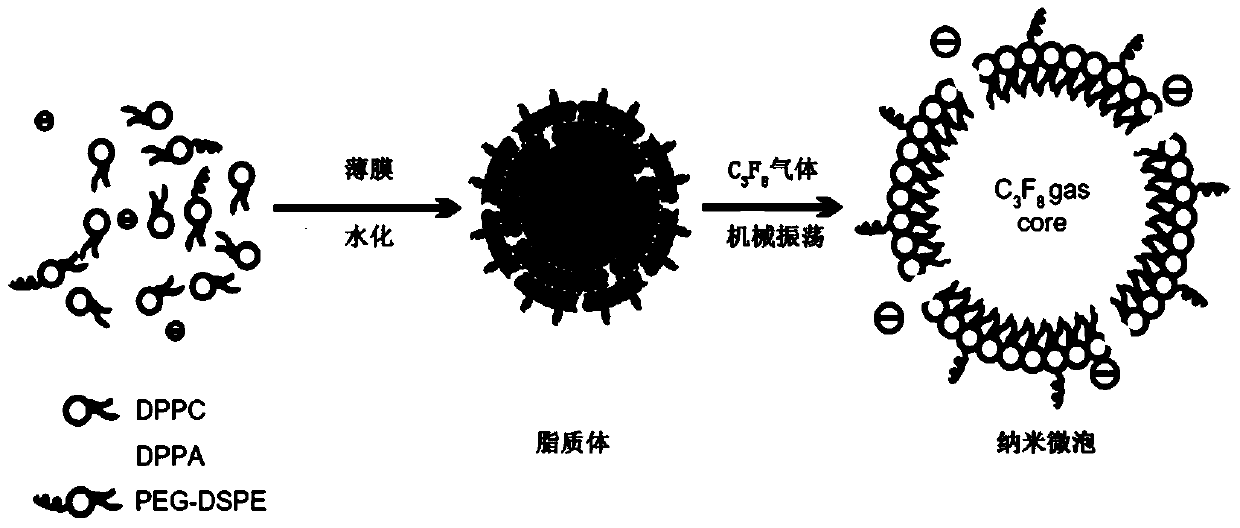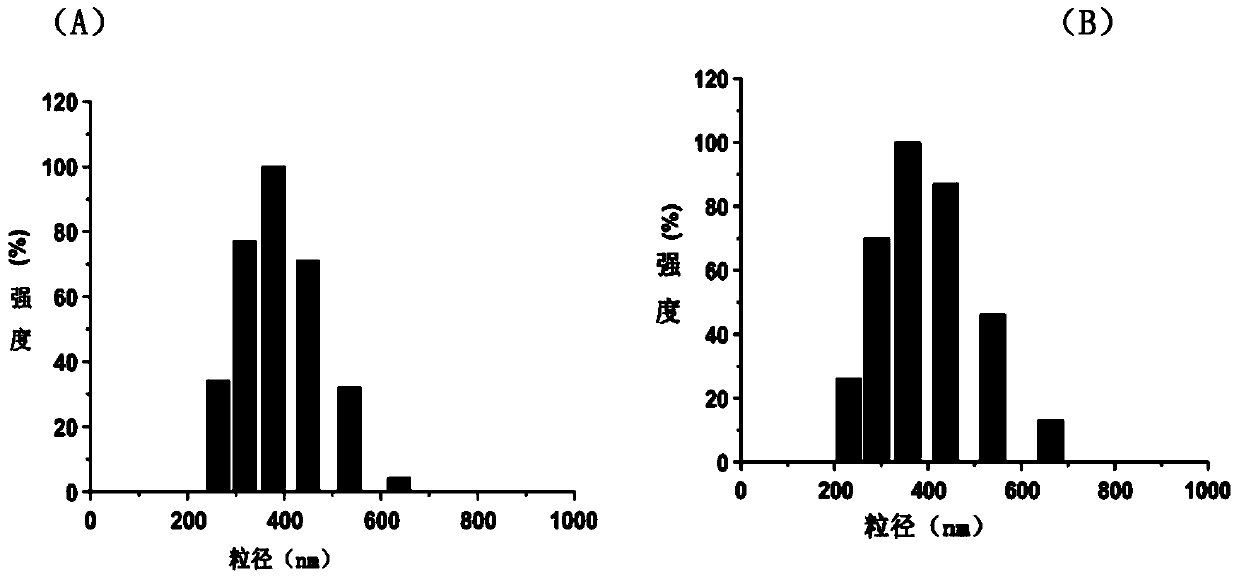Targeted nano-microbubbles for detection of small cell lung cancer, preparation method and application thereof
A small cell lung cancer, nanotechnology, applied in preparations for in vivo experiments, pharmaceutical formulations, echo/ultrasound imaging agents, etc.
- Summary
- Abstract
- Description
- Claims
- Application Information
AI Technical Summary
Problems solved by technology
Method used
Image
Examples
Embodiment 1
[0023] Example 1 Preparation of targeted nano-microbubbles for detection of small cell lung cancer
[0024]1) Dissolve 36 mg of dipalmitolecithin (DPPC), 7 mg of distearoylphosphatidylethanolamine (DSPE), and 2 mg of dipalmitophosphatidic acid (DPPA) in 8 ml of chloroform by film hydration method. Leave the chloroform to evaporate naturally in a fume hood to form a phospholipid film. Add 8 mL of hydration solution (PBS:glycerol=9:1 (volume ratio)) to the above-mentioned film-forming culture dish, and hydrate on a shaker at room temperature for 60 min. Mix the washed phospholipid film with the hydration solution and transfer it to a 50mL centrifuge tube to form liposomes (such as figure 1 shown).
[0025] 2) Dilute 10 μg of anti-progastrin-releasing peptide monoclonal antibody to 50 μL with 10 mM PBS (Nacl 8g / L, Kcl 0.2g / L, Na2HPO4 1.44g / L), add 1 μL of 0.5M EDTA solution; Dissolve 60 mg of mercaptoethylamine in 500 μL of PBS, add 10 μL of 0.5 M EDTA solution, mix the above ...
Embodiment 2
[0027] Example 2 Identification of antibody linkages in targeted nanobubbles
[0028] Mix 100ul each of ordinary nanobubbles and targeted nanobubbles with Dylight488-labeled goat anti-mouse IgG4ul. Under a fluorescent microscope (1000×), it can be seen that the surface of targeted nanobubbles emits bright green fluorescence, while the surface of ordinary nanobubbles emits bright green fluorescence. No obvious fluorescence (such as Figure 4 shown).
Embodiment 3
[0029] Example 3 Binding experiment of targeted nano-microbubbles and small cell lung cancer (H446 cells) cells
[0030] 1.5×10 per hole 4 Cells were inoculated in a 6-well plate covered with coverslips, cultured overnight in an incubator, fixed with 4% paraformaldehyde at room temperature, added 30ul of targeted nanobubbles and normal blank nanobubbles to the slides, and kept at 37°C React in the incubator for 1 hour, observe the combination of targeted nanobubbles and cells under a microscope at 1000 times, and calculate the adhesion rate. Targeted nanobubbles adhere tightly around the H446 cells, and they are regularly arranged along the cell membrane. The average adhesion rate of the cells is (90.2±3.24)%. Figure 5 shown).
PUM
 Login to View More
Login to View More Abstract
Description
Claims
Application Information
 Login to View More
Login to View More - R&D
- Intellectual Property
- Life Sciences
- Materials
- Tech Scout
- Unparalleled Data Quality
- Higher Quality Content
- 60% Fewer Hallucinations
Browse by: Latest US Patents, China's latest patents, Technical Efficacy Thesaurus, Application Domain, Technology Topic, Popular Technical Reports.
© 2025 PatSnap. All rights reserved.Legal|Privacy policy|Modern Slavery Act Transparency Statement|Sitemap|About US| Contact US: help@patsnap.com



